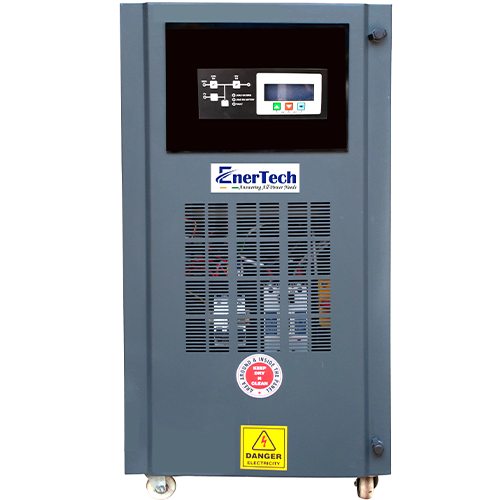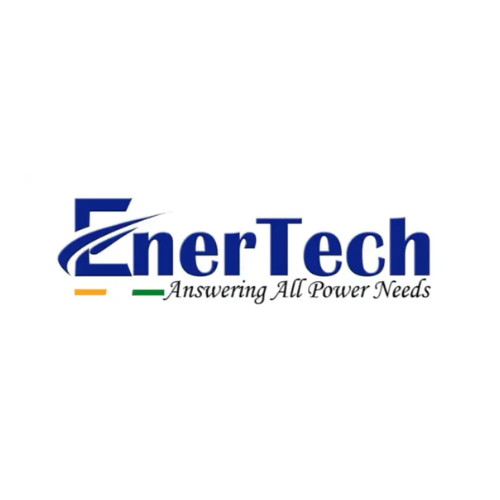Notifications

8 minutes, 43 seconds
-182 Views 0 Comments 0 Likes 0 Reviews

When installing a solar energy system, one of the most crucial components to consider is the solar inverter. Specifically, solar on-grid inverters play a pivotal role in converting the direct current (DC) electricity generated by solar panels into alternating current (AC) electricity, which is used to power your home or business. But not all solar on-grid inverters are the same. With various models and features available on the market, selecting the right one can be a daunting task. To make an informed decision, it’s essential to know what key features to look for in a solar on-grid inverter.
One of the most important factors to consider when choosing a solar on-grid inverter is its efficiency. The efficiency of the inverter directly impacts how much energy is converted and used from the solar panels. The higher the efficiency, the more energy is converted from DC to AC, which means less wastage and more usable energy for your home or business.
Standard Efficiency: Inverters typically have an efficiency rating between 95% to 99%.
Peak Efficiency: Look for an inverter that offers high peak efficiency, meaning it will perform well under optimal sunlight conditions.
For a solar inverter to be connected to the grid, it must meet specific grid compliance standards and certifications set by local authorities. In the case of an on-grid system, the inverter must be compatible with your utility grid to feed excess energy back to the grid or draw power when solar generation is insufficient.
Grid Connection Standards: Ensure the inverter complies with regional standards such as IEEE 1547 (USA), IEC 62116 (Europe), or other local regulations.
Certifications: Look for inverters that have been certified by governing bodies, as this ensures they meet safety, reliability, and operational standards.
Solar inverters come in various sizes, and choosing the correct power output is vital for optimal system performance. The power output of the inverter should match the energy generation capacity of your solar panels.
Inverter Capacity: Inverters are typically available in capacities ranging from 1 kW to 100 kW or higher for commercial installations. Ensure the inverter can handle the peak power output of your solar system.
Oversizing: In some cases, it might be beneficial to slightly oversize the inverter to account for any potential energy loss due to shading, dirt, or temperature variations.
Inverters with monitoring capabilities provide valuable insights into your solar energy system’s performance. These features allow you to track real-time data, such as power generation, system efficiency, and energy consumption, either through a display on the inverter itself or through an app or web portal.
Mobile Apps and Dashboards: Many modern inverters come with mobile apps or online dashboards that allow you to monitor the health and performance of your system from anywhere.
Alerts and Notifications: A good inverter will alert you if there’s an issue, such as system faults or underperformance, allowing you to take immediate action.
Safety should always be a priority when choosing any electrical equipment, and solar on-grid inverters are no exception. Look for an inverter that comes with built-in safety features to protect your system, your property, and the grid.
Overload Protection: Inverters should have protection against overload conditions, preventing damage in case of excessive current.
Ground Fault Protection: This feature helps in preventing electrical shocks or fires by detecting irregularities in the system.
Anti-Islanding Protection: This ensures that the inverter shuts down automatically in the event of a power grid failure, preventing electricity from being fed into the grid when it is unsafe for utility workers.
The durability of your solar on-grid inverter is essential for the long-term performance of your solar energy system. Most inverters are designed to last between 10 to 15 years, but choosing a brand known for durability can help you avoid costly repairs or replacements in the future.
Warranty: Reputable manufacturers offer warranties ranging from 5 to 12 years. Be sure to check the warranty coverage, as it can provide peace of mind in case of any defects or system failures.
Environmental Rating: Consider an inverter with an IP (Ingress Protection) rating for resistance against dust and water, especially if you live in harsh weather conditions.
The size and design of your solar inverter can be important, especially if you are working with limited space or aesthetic concerns. Many modern inverters are designed to be compact and lightweight, making installation easier and more flexible.
Size and Mounting Options: Ensure the inverter fits well within the designated space in your home or facility. Wall-mounted inverters are typically more compact and save floor space.
Aesthetic Considerations: While it may not be a top priority, the design of the inverter can be a factor in maintaining the aesthetics of your solar setup, particularly in residential settings.
Although not necessary for every user, some homeowners or businesses might be interested in integrating solar battery storage into their solar system. If you plan to add energy storage in the future, look for an inverter that is hybrid-compatible.
Hybrid Inverters: These inverters can manage both solar power generation and battery storage simultaneously, allowing you to store excess energy produced by your panels and use it later when needed.
Finally, the reputation of the inverter’s brand and the availability of customer support is crucial. A reliable brand with good customer service can ensure a smooth installation process, quick resolution of any issues, and long-term support for your solar system.
Reputable Brands: Look for well-known, trusted brands that specialize in solar inverters, as they tend to offer high-quality products and excellent customer service.
Customer Reviews: Research customer feedback and online reviews to gain insight into the reliability and performance of the inverter over time.
Choosing the right solar on-grid inverter is crucial for the success of your solar energy system. By considering key features such as efficiency, grid compatibility, power output, safety features, and durability, you can ensure that your solar system will operate at peak performance for years to come. Take the time to evaluate your needs, research options, and choose a reliable and efficient inverter that will help you maximize your solar power generation and contribute to a sustainable future.

